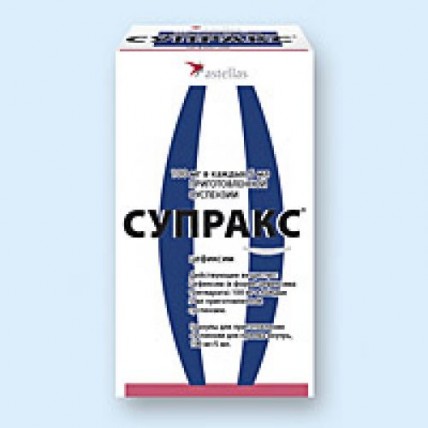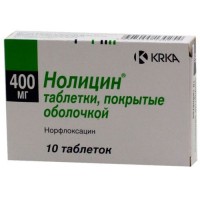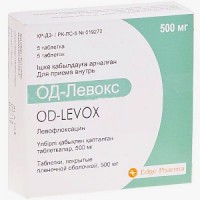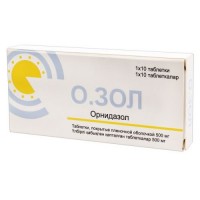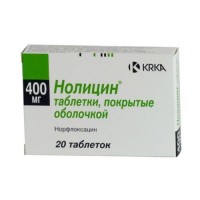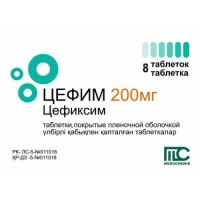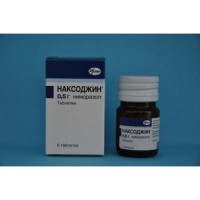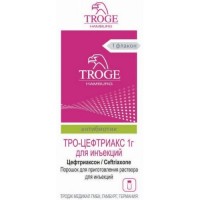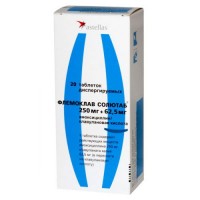Supraks® 30g of granules for oral suspension
- $27.10
The instruction for medical use
of SUPRAKS® medicine
the Trade name
of Supraks®
the International unlicensed
name Tsefiksim Lekarstvennaya
the Granule form for preparation of suspension for intake
Structure
One bottle contains
active agent – a tsefiksim trihydrate of 1.460 g (in terms of tsefiksy 1 g),
excipients: Natrium benzoicum, sucrose, gum xanthane, fragrance strawberry
the Description
Small granules from almost white till cream color.
Pharmacotherapeutic group
Antibacterial drugs of systemic action, cephalosporins of the third generation.
The code of automatic telephone exchange J01DD208
the Pharmacological
Pharmacokinetics Later properties of intake is soaked up by tsefiksy for 40-50%, is not dependent on meal. Peak plasma concentration are reached in 2-6 hours after oral administration. Data on distribution of a tsefiksim in body tissues are limited. Drug passes through a placenta. Rather high concentrations can be reached in bile and urine.
About 50% of the soaked-up dose are removed in not changed view with urine in 24 hours. Linking with proteins of blood plasma does not depend on concentration and makes about 65%.
Elimination half-life of a tsefiksim from blood plasma at healthy faces does not depend on a dosage form and averages 3.0 - 4.0 hours, but can reach 9 hours at some healthy volunteers.
At persons with a moderate renal failure (clearance of creatinine of 20-40 ml/min.) the average elimination half-life of a tsefiksim is extended till 6.4 o'clock. In a heavy renal failure (clearance of creatinine from 5 to 20 ml/min.) the elimination half-life is extended on average till 11.5 o'clock. Drug is not removed substantially from blood at a hemodialysis, or at peritoneal dialysis.
The pharmacodynamics
of Supraks® has bactericidal effect due to suppression of synthesis of cell walls of bacteria. Супракс® has high resistance to action beta laktamaz therefore many microorganisms resistant to penicillin and some cephalosporins because of presence beta laktamaz, can be sensitive to a tsefiksim. Супракс® it is active concerning the majority of strains of the following microorganisms as in vitro, and in clinical infections:
Gram-positive microorganisms: Streptococcus pneumoniae, Streptococcus pyogenes, Streptococcus agalactiae
Gram-negative microorganisms: Haemophilus influenzae (the strains which are producing and not producing some beta lactamazu), Moraxella (Branhamella) catarrhalis (the majority of which is produced by beta lactamazu), Escherichia coli, Proteus mirabilis, Neisseria gonorrhoeae (including the strains which are producing and not producing penicillinase), Haemophilus parainfluenzae (the strains which are producing and not producing some beta lactamazu), Proteus vulgaris, Klebsiella pneumoniae, Klebsiella oxytoca, Pasteurella multocida, Providencia species, Salmonella species, Shigella species, Citrobacter amalonaticus, Citrobacter diversus, Serratia marcescens.
Indications
- pharyngitis, tonsillitis and sinusitis
- an acute bronchitis and exacerbations of chronic bronchitis
- average otitis
- uncomplicated urinary tract infection
- uncomplicated urethral and cervical gonorrhea
- a bacterial gastroenteritis
the Route of administration and doses
the Way of preparation of suspension:
to turn a bottle and to stir up bottle contents, to add 40 ml of the cooled boiled water to 2 stages and to shake up before formation of homogeneous suspension, to let suspension stand within 5 min. for ensuring full dissolution. Before use carefully to shake up ready suspension.
Children:
The recommended dose of suspension makes 8 mg/kg a day. It can be applied in a daily dose once or in 2 receptions, that is 4 mg/kg each 12 hours.
The weight of the patient
(kg)
the Daily dose
the Daily dose
(teaspoons)
(mg)
(ml)
6.25
50 2.5 0.5 12.5 100 5.0 1.0 18.75 150 7.5 1.5 25 200 10.0 2.0
Single dose for children up to 12 years of 4-8 mg/kg, daily 8 mg/kg of weight.
Children weighing more than 50 kg or are more senior than 12 years have to receive the dose recommended for adults, daily - 400 mg, single 200-400 mg. The average duration of a course of treatment is 7-10 days.
Renal failure:
In the presence of a renal failure of Supraks® it can be appointed as follows:
The clearance of creatinine
the Dose
of 60 ml/min.
the Standard dose
(400 mg a day)
21 – 60 ml/min.
of 75% of a standard dose
(300 mg a day)
20 ml/min.
a Half of a standard dose
(200 mg a day)
Side effects
- a headache, dizziness
- nausea, vomiting, dryness in a mouth, anorexia, an abdominal pain, a meteorism, dysbacteriosis, diarrhea, GIT candidiasis
- skin rash, a small tortoiseshell, a dermahemia, a skin itching
- fever
- an eosinophilia, a leukopenia, a neutropenia, thrombocytopenia, hemolytic anemia
- an abnormal liver function (increase in activity of hepatic transaminases, SF, a hyperbilirubinemia, jaundice)
- stomatitis, a glossitis, pseudomembranous colitis
- interstitial nephrite
of the Contraindication
- individual intolerance of antibiotics of tsefalosporinovy group
- children's age (up to 6 months)
- the lactation period
Medicinal interactions
during treatment by antibiotics of a tsefalosporinovy row was described false positive result of the direct test of Koombs, in this regard it is necessary to consider that the positive take of the test of Koombs can be caused by use of this drug.
As well as when using other cephalosporins, at some patients the increase in a prothrombin time was observed. In this regard at the patients receiving therapy by anticoagulants it is necessary to be careful.
Special instructions
before therapy it is necessary to specify existence in the anamnesis of instructions on hypersensitivity reaction to cephalosporins, penicillin and other drugs.
An expiration date of suspension of 14 days from the moment of preparation.
Pregnancy
signs of damage of a fruit against the background of use of Supraksa® were Not revealed. Use at pregnancy is possible when the expected advantage for mother exceeds potential risk for a fruit.
In researches it is shown that Supraks® does not affect fertility, has no mutagen and cancerogenic effect.
The feature of influence on ability to drive the car and potentially dangerous mechanisms
was not reported about adverse influence of drug on ability to drive the car and work with mechanisms.
Overdose
Symptoms: strengthening of side effects.
Treatment: there is no specific antidote, gastric lavage and symptomatic therapy.
The form of release and packing
On 30 g of drug (in terms of 1:46 g of active agent) place in a bottle of dark glass with the screwing-up plastic cover.
On 1 bottle together with the instruction for medical use in the state and Russian languages and a plastic dosing spoon of 5 ml or 10 ml place in a cardboard pack.
To Store storage conditions at a temperature from +15 °C to +30 °C.
To store out of children's reach!
3 years
not to use a period of storage after expiry date!
Prescription status
According to the prescription
of Proizvoditel Dzhazira Pharmaceutical Industries, Saudi Arabia
for JSC Gideon Richter,
Hungary 1103 Budapest, Demrei St., 19-21, Hungary
According to
the license Astellas Pharma Ink., Osaka, Japan
the Address of the organization accepting in the territory of the Republic of Kazakhstan claims from consumers on quality of products:
Representative office of JSC Gideon Richter in RK
E-mail: info@richter.kz
Phone number: 8-(7272)-58-26-22, 8-(7272)-58-26-23
of SUPRAKS® medicine
the Trade name
of Supraks®
the International unlicensed
name Tsefiksim Lekarstvennaya
the Granule form for preparation of suspension for intake
Structure
One bottle contains
active agent – a tsefiksim trihydrate of 1.460 g (in terms of tsefiksy 1 g),
excipients: Natrium benzoicum, sucrose, gum xanthane, fragrance strawberry
the Description
Small granules from almost white till cream color.
Pharmacotherapeutic group
Antibacterial drugs of systemic action, cephalosporins of the third generation.
The code of automatic telephone exchange J01DD208
the Pharmacological
Pharmacokinetics Later properties of intake is soaked up by tsefiksy for 40-50%, is not dependent on meal. Peak plasma concentration are reached in 2-6 hours after oral administration. Data on distribution of a tsefiksim in body tissues are limited. Drug passes through a placenta. Rather high concentrations can be reached in bile and urine.
About 50% of the soaked-up dose are removed in not changed view with urine in 24 hours. Linking with proteins of blood plasma does not depend on concentration and makes about 65%.
Elimination half-life of a tsefiksim from blood plasma at healthy faces does not depend on a dosage form and averages 3.0 - 4.0 hours, but can reach 9 hours at some healthy volunteers.
At persons with a moderate renal failure (clearance of creatinine of 20-40 ml/min.) the average elimination half-life of a tsefiksim is extended till 6.4 o'clock. In a heavy renal failure (clearance of creatinine from 5 to 20 ml/min.) the elimination half-life is extended on average till 11.5 o'clock. Drug is not removed substantially from blood at a hemodialysis, or at peritoneal dialysis.
The pharmacodynamics
of Supraks® has bactericidal effect due to suppression of synthesis of cell walls of bacteria. Супракс® has high resistance to action beta laktamaz therefore many microorganisms resistant to penicillin and some cephalosporins because of presence beta laktamaz, can be sensitive to a tsefiksim. Супракс® it is active concerning the majority of strains of the following microorganisms as in vitro, and in clinical infections:
Gram-positive microorganisms: Streptococcus pneumoniae, Streptococcus pyogenes, Streptococcus agalactiae
Gram-negative microorganisms: Haemophilus influenzae (the strains which are producing and not producing some beta lactamazu), Moraxella (Branhamella) catarrhalis (the majority of which is produced by beta lactamazu), Escherichia coli, Proteus mirabilis, Neisseria gonorrhoeae (including the strains which are producing and not producing penicillinase), Haemophilus parainfluenzae (the strains which are producing and not producing some beta lactamazu), Proteus vulgaris, Klebsiella pneumoniae, Klebsiella oxytoca, Pasteurella multocida, Providencia species, Salmonella species, Shigella species, Citrobacter amalonaticus, Citrobacter diversus, Serratia marcescens.
Indications
- pharyngitis, tonsillitis and sinusitis
- an acute bronchitis and exacerbations of chronic bronchitis
- average otitis
- uncomplicated urinary tract infection
- uncomplicated urethral and cervical gonorrhea
- a bacterial gastroenteritis
the Route of administration and doses
the Way of preparation of suspension:
to turn a bottle and to stir up bottle contents, to add 40 ml of the cooled boiled water to 2 stages and to shake up before formation of homogeneous suspension, to let suspension stand within 5 min. for ensuring full dissolution. Before use carefully to shake up ready suspension.
Children:
The recommended dose of suspension makes 8 mg/kg a day. It can be applied in a daily dose once or in 2 receptions, that is 4 mg/kg each 12 hours.
The weight of the patient
(kg)
the Daily dose
the Daily dose
(teaspoons)
(mg)
(ml)
6.25
50 2.5 0.5 12.5 100 5.0 1.0 18.75 150 7.5 1.5 25 200 10.0 2.0
Single dose for children up to 12 years of 4-8 mg/kg, daily 8 mg/kg of weight.
Children weighing more than 50 kg or are more senior than 12 years have to receive the dose recommended for adults, daily - 400 mg, single 200-400 mg. The average duration of a course of treatment is 7-10 days.
Renal failure:
In the presence of a renal failure of Supraks® it can be appointed as follows:
The clearance of creatinine
the Dose
of 60 ml/min.
the Standard dose
(400 mg a day)
21 – 60 ml/min.
of 75% of a standard dose
(300 mg a day)
20 ml/min.
a Half of a standard dose
(200 mg a day)
Side effects
- a headache, dizziness
- nausea, vomiting, dryness in a mouth, anorexia, an abdominal pain, a meteorism, dysbacteriosis, diarrhea, GIT candidiasis
- skin rash, a small tortoiseshell, a dermahemia, a skin itching
- fever
- an eosinophilia, a leukopenia, a neutropenia, thrombocytopenia, hemolytic anemia
- an abnormal liver function (increase in activity of hepatic transaminases, SF, a hyperbilirubinemia, jaundice)
- stomatitis, a glossitis, pseudomembranous colitis
- interstitial nephrite
of the Contraindication
- individual intolerance of antibiotics of tsefalosporinovy group
- children's age (up to 6 months)
- the lactation period
Medicinal interactions
during treatment by antibiotics of a tsefalosporinovy row was described false positive result of the direct test of Koombs, in this regard it is necessary to consider that the positive take of the test of Koombs can be caused by use of this drug.
As well as when using other cephalosporins, at some patients the increase in a prothrombin time was observed. In this regard at the patients receiving therapy by anticoagulants it is necessary to be careful.
Special instructions
before therapy it is necessary to specify existence in the anamnesis of instructions on hypersensitivity reaction to cephalosporins, penicillin and other drugs.
An expiration date of suspension of 14 days from the moment of preparation.
Pregnancy
signs of damage of a fruit against the background of use of Supraksa® were Not revealed. Use at pregnancy is possible when the expected advantage for mother exceeds potential risk for a fruit.
In researches it is shown that Supraks® does not affect fertility, has no mutagen and cancerogenic effect.
The feature of influence on ability to drive the car and potentially dangerous mechanisms
was not reported about adverse influence of drug on ability to drive the car and work with mechanisms.
Overdose
Symptoms: strengthening of side effects.
Treatment: there is no specific antidote, gastric lavage and symptomatic therapy.
The form of release and packing
On 30 g of drug (in terms of 1:46 g of active agent) place in a bottle of dark glass with the screwing-up plastic cover.
On 1 bottle together with the instruction for medical use in the state and Russian languages and a plastic dosing spoon of 5 ml or 10 ml place in a cardboard pack.
To Store storage conditions at a temperature from +15 °C to +30 °C.
To store out of children's reach!
3 years
not to use a period of storage after expiry date!
Prescription status
According to the prescription
of Proizvoditel Dzhazira Pharmaceutical Industries, Saudi Arabia
for JSC Gideon Richter,
Hungary 1103 Budapest, Demrei St., 19-21, Hungary
According to
the license Astellas Pharma Ink., Osaka, Japan
the Address of the organization accepting in the territory of the Republic of Kazakhstan claims from consumers on quality of products:
Representative office of JSC Gideon Richter in RK
E-mail: info@richter.kz
Phone number: 8-(7272)-58-26-22, 8-(7272)-58-26-23
